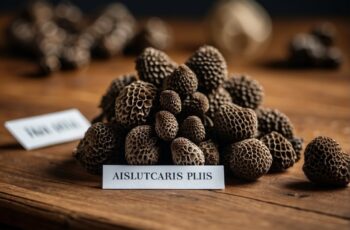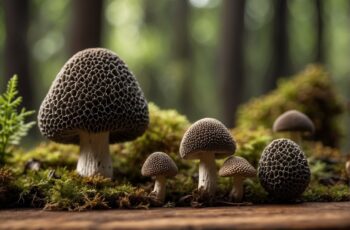Mushroom hunting is a pastime that connects you with the tranquility of the outdoors while offering the excitement of a treasure hunt. As you delve into forests, fields, or even your own backyard, every foray into the wild provides a chance to discover the subtle beauty of various fungi. Beyond the thrill of the hunt, foraging for mushrooms can be a sustainable way to source food, learn about local ecosystems, and participate in a centuries-old tradition.
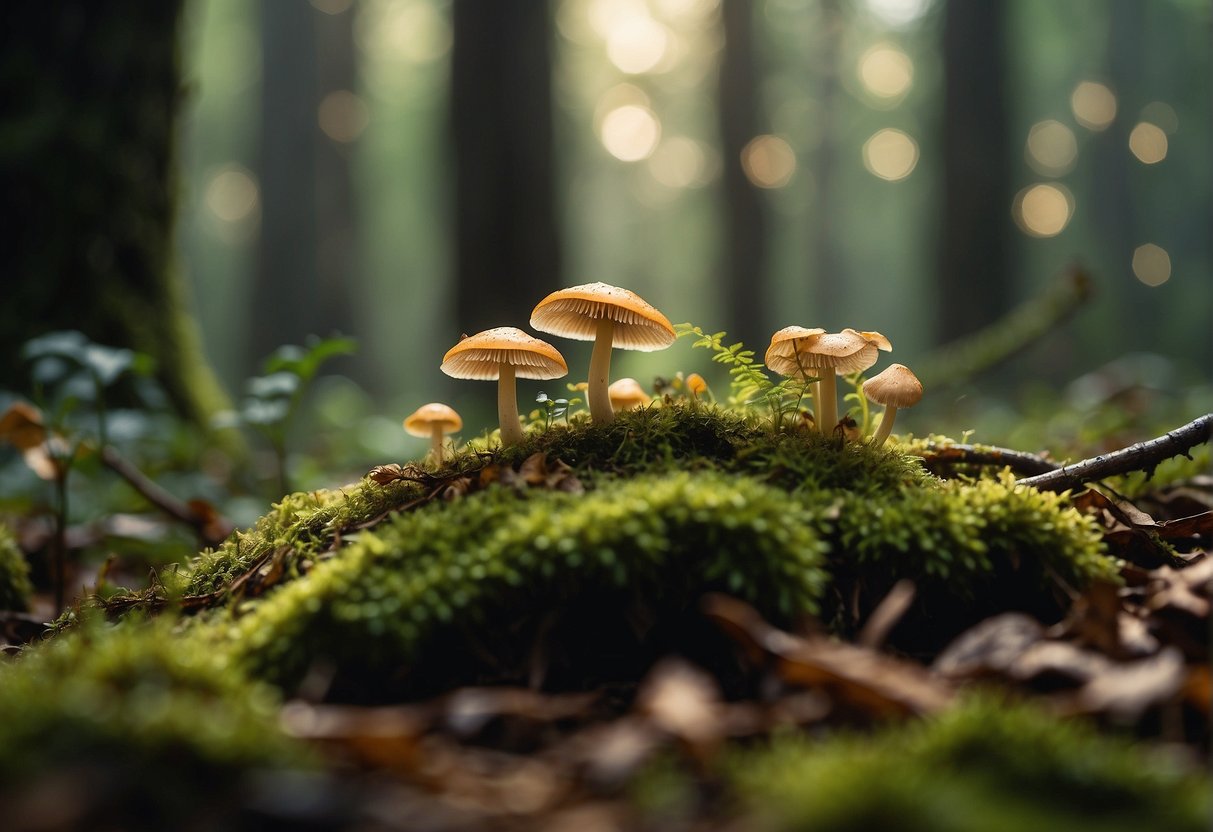
While the prospect of finding delicacies like the elusive morel can be enticing, successful mushroom foraging requires knowledge and preparation. A thorough understanding of mushroom species, which are safe to eat and which to avoid, is crucial for every mushroom hunter. Equally important is knowing when and where to look, as timing and habitat are key to finding bountiful harvests. Proper identification, ethical harvesting practices, and safe handling are essential skills to ensure that your foraging experience is both rewarding and safe.
Key Takeaways
- Mushroom foraging can be a fulfilling outdoor activity.
- Knowledge of species and habitats enhances success.
- Safe harvesting and handling are critical to the practice.
Understanding Mushrooms
Before you embark on the exciting adventure of mushroom hunting, it’s crucial to grasp the fundamentals of the mushrooms themselves. This includes being able to identify various species accurately, understanding the dangers of toxic mushrooms, and appreciating the role of mycelium in mushroom development.
Species Identification
When you’re out in the wild, identifying mushroom species accurately is the cornerstone of safe foraging. Each mushroom has unique characteristics such as gill patterns, cap shapes, and spore colors that are critical for proper identification. An incorrect identification can mean the difference between finding a delicious edible and a harmful look-alike. A Beginner’s Guide to Foraging Wild Fungi offers insights into the ecosystem and best times for foraging, emphasizing the importance of recognizing the diverse types of mushrooms.
Toxic Mushrooms and Safety
When it comes to mushrooms, what you don’t know can hurt you. Some species, including certain wild mushrooms and poisonous mushrooms, can pose serious health risks if ingested. Being aware of dangerous species like false morels, which contain toxic compounds, is essential. It’s a golden rule of mushroom hunting: when in doubt, leave it out. This means never consuming anything unless you are 100% certain of its safety. Employing reference materials from trusted guides on mushroom foraging safety can help you avoid toxic varieties.
The Role of Mycelium in Mushroom Growth
Understanding the part mycelium plays in mushroom growth enriches your foraging experience and increases your chances of a good yield. Mycelium is akin to a plant’s root system – it’s the life-sustaining network of a fungus that extends beneath the soil surface. Every mushroom you see is the fruit of this intricate mycelium underneath. Knowledge of how mycelium works, and where it thrives, can lead you to areas where edible mushrooms are more likely to be found. This understanding is the bedrock of sustainable harvesting practices, ensuring you forage without harming the natural ecosystem.
Preparing for Mushroom Hunting
Before you set out on your mushroom hunting adventure, it’s crucial to gear up correctly, understand when and where to hunt, and be aware of safety and legal considerations. This preparation ensures not only a fruitful hunt but also your well-being in the great outdoors.
Choosing the Right Equipment
For an effective mushroom hunt, your gear should include a basket to carry your finds while allowing spores to disperse as you walk. Opt for a basket over a plastic bag to promote the life cycle of fungi. Additionally, carry several mesh bags to separate different species and prevent cross-contamination. A sharp knife is essential for cutting mushroom stems cleanly without damaging the mycelium. Do wear appropriate clothing—durable, waterproof boots and lightweight, breathable layers to protect you from various elements during your search.
Understanding Weather and Soil Conditions
Mushrooms thrive in specific weather conditions; they favor moist, damp, and humid climates. A rule of thumb is to head out after a period of rain, which encourages mushroom growth. Pay attention to soil temperature as well; it’s an often-overlooked factor that plays a pivotal role in fungal proliferation. Areas that have experienced recent rainfall and have soils rich in organic matter are often hotspots for mushrooms.
Safety and Legal Regulations
Remember, safety comes first. Learn to accurately identify edible mushrooms to avoid poisoning. Carry a field guide or have a knowledgeable expert with you. Always venture out into the wild responsibly and within legal bounds. Acquire the necessary permits, especially when foraging in protected areas like those regulated by the forest service or on private land. Trespassing to forage is not only illegal but also disrespectful to landowners and the environment you’re enjoying.
Keep this information in mind as you plan your mushroom hunting journey. With the right preparation, you can enjoy the full experience safely and legally.
Finding the Perfect Spot
Successfully hunting for morel mushrooms requires knowledge of their preferred habitats and interpreting environmental clues. Once you understand these, you’ll significantly increase your chances of finding these elusive fungi.
Habitats for Morel Mushrooms
Woods are the natural habitat for morel mushrooms, but not just any forest will do. You’ll want to focus on areas with deciduous trees like ash, elm, and oak. These species often foster the conditions morels love. Pay special attention to river bottoms and moist soil areas, as they provide the moisture morels crave.
- Elm Trees: Look for stands of dead elm trees; morels are often found nearby.
- Ash and Oak Trees: These environments are also known to support morel growth.
Interpreting Environmental Clues
Understanding the environment will guide you to morel hotspots. South-facing slopes get more sunlight and warm up faster in the spring, encouraging the growth of morels. When investigating potential spots, keep note of the vegetation and ground moisture levels.
- Burn Sites: Morels often flourish in areas that have experienced recent wildfires, so target these for a potential windfall.
- Tree Identification: Learn to identify poplars and cottonwoods, as these trees can indicate good morel habitats.
Harvesting and Handling Techniques
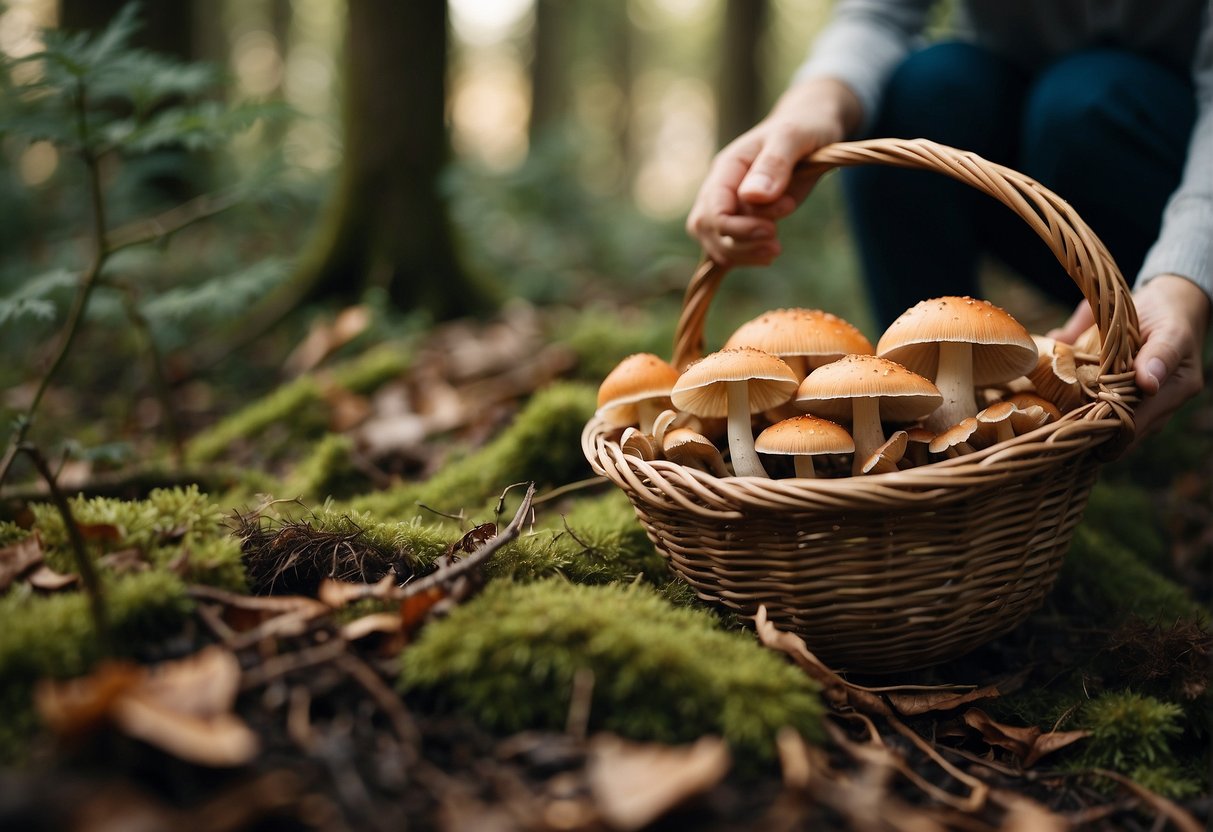
Successful mushroom foraging hinges on using the right techniques not only to ensure a bountiful harvest but also to maintain the integrity and edibility of the mushrooms. Let’s walk through the optimal methods for harvesting mushrooms and the best practices for cleaning and storing your finds.
Correct Harvesting Methods
When you spot a mushroom of interest, assess its size; mature mushrooms with open caps are generally ready to harvest. This avoids picking immature mushrooms, allowing them to release their spores and contribute to future growths. Use a sharp knife or scissors to cleanly cut the mushroom at the base of the stem without disturbing the surrounding mycelium, which is crucial for regrowth.
- Do: Cut at stem base.
- Do Not: Pull from the ground.
You want to leave the foraging ground as undisturbed as possible to preserve it for future harvests. A mindful harvester respects the ecosystem and ensures the longevity of mushroom patches.
Cleaning and Storing Your Finds
Once you have harvested your mushrooms, cleaning them properly is paramount to preserve their taste and shelf life. Gently brush off any dirt using a soft brush or a damp cloth, but avoid washing them under water as they will absorb moisture, which can lead to quicker spoilage.
- Cleaning tools: Soft brush, damp cloth.
- Avoid: Soaking in water.
For storing your mushrooms, it’s essential to keep them in a cool and dry place. Use breathable containers like paper bags or a basket to allow any moisture to evaporate, which prevents mold.
- Storage: Paper bags, baskets, refrigerator.
- Life span: A few days to a week, depending on the variety.
Remember, your goal is to keep mushrooms dry and cool until you’re ready to use them. This will ensure your foraged mushrooms are fresh, flavorful, and safe to eat.
Enjoying Your Harvest
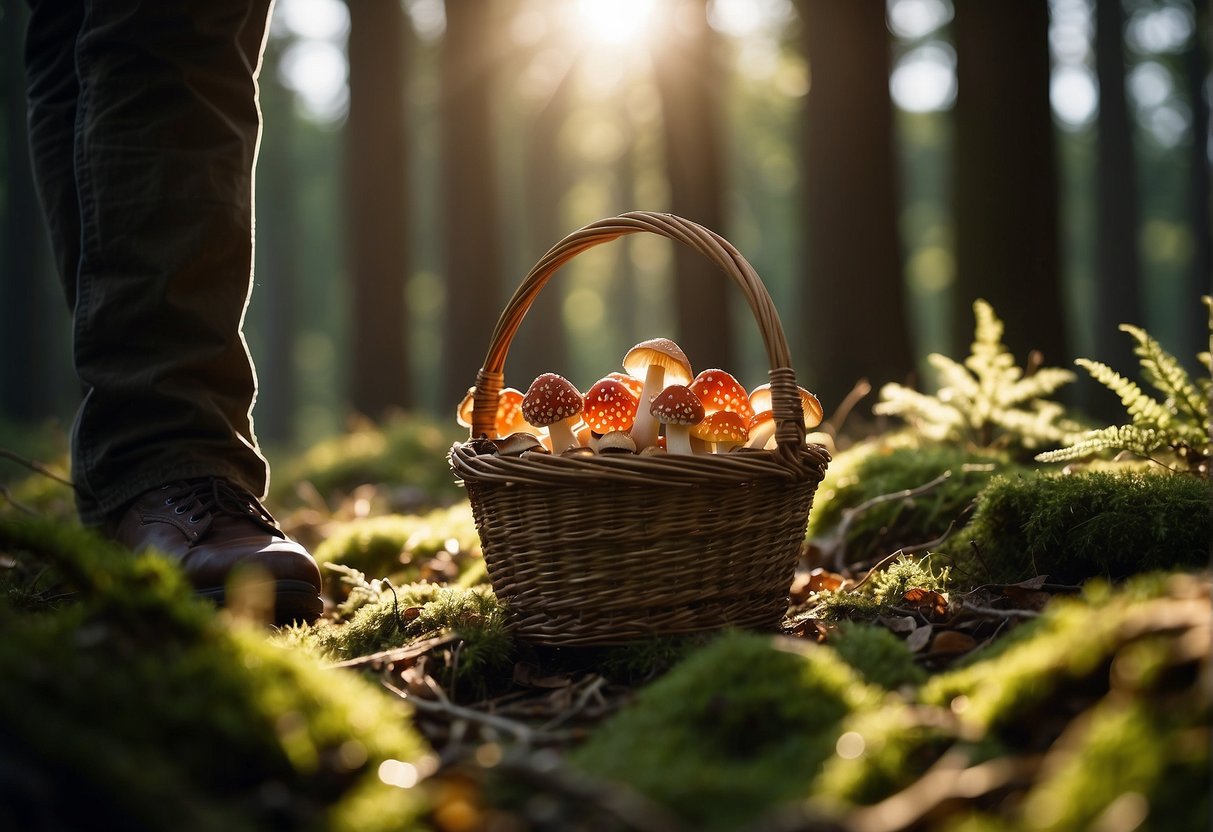
After spending a day outdoors and successfully foraging, you’ve got your basket full of wild mushrooms. It’s time to transform your harvest into delicious meals and ensure they’re stored properly to enjoy for longer.
Cooking Tips
When cooking mushrooms, sautéing is a timeless method that brings out their earthy flavors. Let’s break down specific tips for some of the mushrooms you might have gathered:
- Chanterelles: Known for their delicate flavor, gently sauté chanterelles in butter to enhance their peppery taste.
- Oyster Mushrooms: These have a subtle anise-like essence. Sauté oysters briefly to maintain their tender texture.
- Porcini: Boasting a rich flavor, porcini mushrooms are ideal for robust recipes like stews. Just a few minutes in the pan will do.
- Morel Mushroom: Their complex, nutty profile makes them fantastic when lightly sautéd and added to creamy sauces.
- Chicken of the Woods: With a texture similar to, well, chicken, these can be cooked thoroughly and take on accompanying flavors well.
- Hen of the Woods: Also known as maitake, these mushrooms are best when their edges are crisp from sautéing.
Remember, never wash mushrooms with water as it can make them soggy. Instead, brush off any dirt gently with a soft brush.
Preservation and Storage
- Chanterelles and Porcini: Store in a paper bag in the refrigerator for up to a week.
- Oyster Mushrooms: Best used fresh but can be wrapped in a paper towel and placed in a plastic bag with holes; they’ll last a couple of days.
- Morel Mushroom: These dry exceptionally well; thread and hang them or use a food dehydrator.
- Chicken and Hen of the Woods: Both can be stored in the fridge and even frozen for extended use.
A table for quick reference on mushroom storage:
| Mushroom Type | Refrigerator | Freezer |
|---|---|---|
| Chanterelle | Up to 7 days | Not recommended |
| Oyster Mushrooms | 2-3 days | Not recommended |
| Porcini | Up to 7 days | 3 months |
| Morel | Dry and store | 6 months |
| Chicken of the Woods | Up to 10 days | 3 months |
| Hen of the Woods | Up to 10 days | 3 months |
By paying attention to these cooking and storage tips, you’ll ensure that your foraged mushrooms will be a source of delicious meals and fond memories for days to come.

